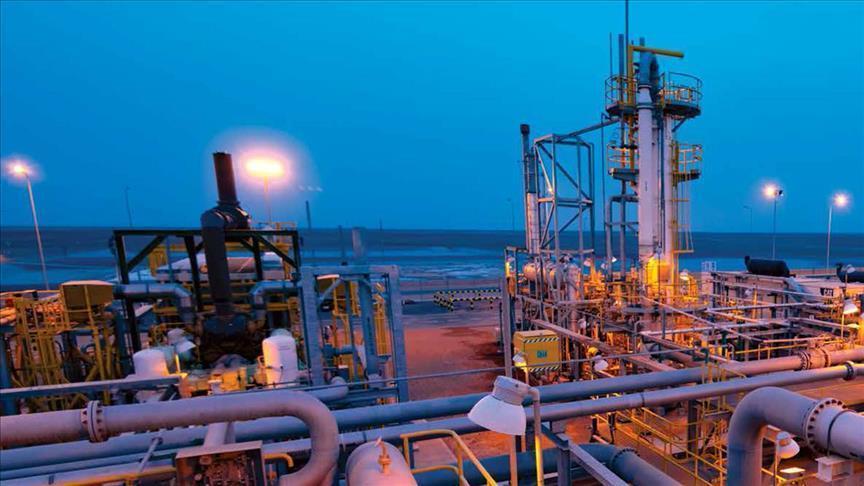The world’s largest energy economy, China, has become the third largest global gas market with demand increasing to double-digit figures as a result of sustained economic growth and supportive government policies.
Although China was the sixth largest global producer due to shortfalls in meeting rising domestic consumption, the country has now become the second largest LNG and third largest pipeline gas importer in the world.
China’s policy on coal-to-gas switching both for industrial and domestic consumption emerged from greater demand. However, greater gas consumption has come at a cost to the extent that over the past 12 years, the overall gas import dependency rate has increased by approximately 40 percent. Despite the fact that natural gas makes up only 7 percent of overall energy supplies in the country’s energy mix as of 2017, with a focus on cleaning up China’s heavily polluted environment, the target for future gas consumption is set at 10 percent in 2020 and 15 percent in 2030.
To meet the challenges and the objectives laid out in the 13th five-year energy plan, Beijing has set four major specific targets to boost gas consumption –
- The development of a gas hub
- Improved infrastructure
- Reforms in the upstream and downstream sectors
- A reduction in air pollution
Of major concern and over which Beijing spent much of its focus was gas price liberalization, which remains a major hurdle for the government.
A gas price liberalization initiative through two current hub projects, namely Shanghai and Chongqing, started back in 2015 with the mission of forming a pricing mechanism in China that would be acceptable as an international benchmark.
To enable such a competitive gas hub pricing mechanism to be effective, policymakers have devised a standardized contract mechanism, ensured price transparency and third party access to infrastructure, the process of which will take some time and require clear and full commitment. Although Beijing argues that the creation of a gas trading hub in China is a logical step because of ever-increasing gas demand and Shanghai’s advantageous position while mitigating pollution, China’s gas industry is still dominated by three state-owned oil companies, which is a hurdle to China becoming a genuine gas trading hub.
China’s desire to move from a position as a price taker to that of a price setter can only materialize with more enhanced gas liquidity, which is not yet at a level to satisfy market needs. The volume of spot market trading, in particular, is still too low while longer-term contracts still play a major role in the gas market. This is not only an issue in pipeline gas but is also prevalent for the LNG market as well. Once China’s spot gas market strengthens with stronger liquidity, the country’s overall influence on the global gas market will heighten while cushioning it from excessive price hikes.
The International Energy Agency predicts that China’s gas consumption will likely surpass that of Japan in 2018, to become the largest gas importer. The agency also predicts that China’s gas import resources will include larger volumes of LNG compared to the recent year’s pipeline gas. Another influential consultant company, Wood Mackenzie, also forecasts that China’s LNG imports by 2028 could hit global historic highs, which is indicative that China’s importance in the gas market is set to grow further in the years ahead.
Competition to become a major gas-trading hub in Asia has intensified between China, Japan Singapore in recent years. While each gas hub candidate country faces different hurdles in becoming a regional trading hub, China’s ongoing efforts to control gas prices have been the single most important factor in spurring it on to achieve its ambitious target.
While China’s overall gas demand is expected to grow in the future, Japan’s hunger for natural gas is dropping and is expected to diminish further in the years ahead. Singapore is nonetheless well placed geographically to offer capacity to surrounding Asian countries.
Singapore with its established market price mechanism, combined with its advantageous location, could see out the competition by controlling the total demand of the Association of South East Asian Nations - ASEAN countries. However, although Singapore could reign supreme as a gas hub, China’s Chongqing could also compete with its favorable location close to major import terminals and with its good pipeline connections.
If China carries out appropriate gas price reforms endorsing market transparency, China could eclipse candidate countries as a frontrunner for the gas trade hub prize.
Many energy strategists argue that China’s long-term demand for natural gas might not grow as much as expected due to increasing investments in renewables, which might exceed those of natural gas. It is clear that China has initiated the deployment of vast volumes of renewables in the form of solar, wind and nuclear energy. For the time being, the expanded use of renewables has started to replace coal and other fossil fuels, and it will not be long before fierce competition between renewables natural gas will arise when the cost of renewables deployment further dwindles. But given China’s enormous energy growth potential and its increasing electricity demand, the key role gas is likely to play may not dissipate as some energy experts envisage.
China’s policymakers maintain that unless it pushes forward in achieving a regional gas-trading hub in the long run, the country’s competitive advantage might well be lost. This could emerge unless the necessary steps are taken for a transparent and competitive pricing mechanism.
- Opinions expressed in this piece are the author’s own and do not necessarily reflect Anadolu Agency's editorial policy.


